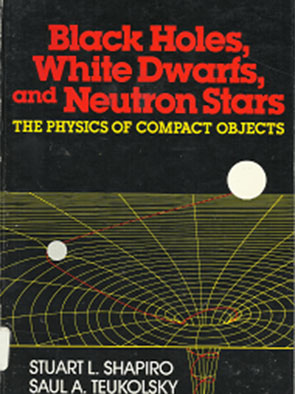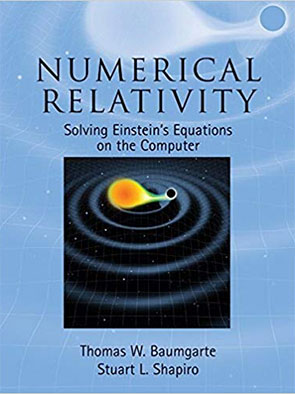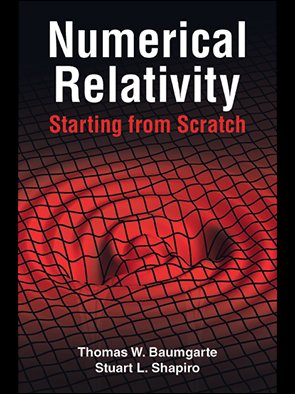Stuart L. Shapiro
For More Information
Education
- Ph.D., Astrophysical Sciences, Princeton University, 1973
- A.B. (Summa Cum Laude), Astronomy, Harvard University, 1969
Biography
Professor Stuart Shapiro received an A.B. in astronomy from Harvard in 1969 and M.A. and Ph.D. degrees in astrophysical sciences from Princeton University in 1971 and 1973, respectively. He went from research associate to full professor of astronomy and physics at Cornell University (1973-1995) before relocating to the University of Illinois in 1996.
Professor Shapiro has broad research interests that span many areas of theoretical astrophysics and general relativity theory, including the physics of black holes and neutron stars, gravitational collapse, the generation of gravitational waves, and the dynamics of large N-body dynamical systems. His research emphasizes the use of supercomputers to solve long-standing, fundamental problems in numerical relativity and computational astrophysics. Shapiro has worked on the theory of accretion onto compact objects, relativistic stellar dynamics, gravitational collapse, binary black hole and neutron star inspiral and coalescence, the generation of gravitational waves, the formation of black holes, Big-Bang nucleosynthesis and neutrino astrophysics, to name a few topics. Some of his most important simulations include the emitted radiation spectrum from gas accreting onto black holes and neutron stars, the disruption and consumption of stars in star clusters containing a central supermassive black hole, the formation of a supermassive black hole at the center of a galaxy or quasar from the collapse of a relativistic collisionless gas, the inspiral and merger of two black holes and the formation of relativistic jets by the black hole remnants of coalescing, magnetized, binary neutron stars. He merged the fields of stellar dynamics and numerical relativity, a development which led to the simulation of the catastrophic collapse of an unstable, relativistic cluster to a black hole, the numerical exploration of the cosmic censorship and "hoop" conjectures, and the demonstration that toroidal black holes can arise as transients during gravitational collapse. He was the first to calculate the radiation spectrum from spherical accretion onto a nonspinning black hole in general relativity. He and his collaborators coined the terms "supramassive" and "hypermassive" to describe two important classes of rapidly spinning neutron stars, whose properties they then determined. He helped develop the so-called BSSN formalism (named for Baumgarte-Shapiro-Shibata-Nakamura), now so widely adopted in numerical relativity. Long interested in the future detection of gravitational waves by laser interferometers like LIGO and LISA, Shapiro and his group are working on the theory of gravitational wave generation and the identification of promising astrophysical sources.
Professor Shapiro's deep interest in training young scientists has given him a reputation as an inspiring and effective classroom teacher and research advisor. He has created and taught over a dozen courses in physics and astrophysics. The textbook that he coauthored, Black Holes, White Dwarfs and Neutron Stars: The Physics of Compact Objects (John Wiley, 1983) is a standard in the field. His research has led him to develop numerous videos of his computer simulations, which offer both great technical insight to experts and qualitative understanding to non-specialists. He leads a vibrant group of graduate students and postdocs working in theoretical astrophysics and general relativity. For over four decades he has trained an expert team of advanced undergraduates doing research in theoretical astrophysics and general relativity by means of supercomputer simulation and visualization. His undergraduate research program is among the most successful in the nation; members of his team are highly sought after by the most select graduate programs in physics, astronomy, computer science, and related areas; many are now distinguished scientists and faculty members in their own right.
Important Links:
- Publications
- Movies
- American Institute of Physics Interview, April 2021
- 2021 Art-Science Festival Presentation
- AstroFest2024 Plenary Talk
- Recent Publications
- Illinois Relativity Group
- News-Gazette Interview, February 2005
- 100 Years of Relativity Interview
Research Statement
With my group I pursue research in general relativity and theoretical astrophysics funded by my NSF and NASA grants. Our area of focus is tackling problems involving general relativity, the generation of gravitational radiation, relativistic hydrodynamics, and relativistic magnetohydrodynamics. A common thread uniting the different theoretical topics is the crucial role of gravitation, especially relativistic gravitation. Compact objects provide the principal forum, and the dynamics of matter in a strong gravitational field is a major theme. Some of the topics for investigation include the inspiral and coalescence of compact binaries (binary black holes, binary neutron stars, binary black hole--neutron stars and binary white dwarf-neutron stars), the generation of gravitational waves from binaries and other promising astrophysical sources and the accompanying electromagnetic signals, gravitational collapse, the stability of rotating, relativistic stars and the evolution and final fate of unstable stars, gamma-ray burst sources, circumbinary disks around merging supermassive black holes in the cores of galaxies and quasars, the distribution of dark matter around supermassive blacks, and the gravothermal contraction and collapse of dark matter clusters to supermassive black holes. Most of these topics represent long-standing, fundamental problems in theoretical physics requiring large-scale computation for solution. Hence the approach involves to a significant degree large-scale computations on parallel machines, as well as analytical modeling. Many of the numerical calculations employ the state-of-the-art computational and visualization resources. They comprise both initial value and evolution computations and treat vacuum spacetimes containing black holes as well as spacetimes containing realistic matter sources, magnetic fields and both electromagnetic and neutrino radiation. The results have important implications for astronomical observations, including those measured by present and future gravitational wave interferometers and gamma-ray burst detectors.
Books




Research Areas
Selected Articles in Journals
- M. Ruiz, S.L. Shapiro and A. Tsokaros. GW170817, General Relativistic Magnetohydrodynamic Simulations, and the Neutron Star Maximum Mass. Phys. Rev. D: Rapid Commun. 97, 021501 (2018). Neutron Star Maximum Mass
- M. Ruiz, R. Lang, V. Paschalidis and S.L. Shapiro. Binary Neutron Star Mergers: A Jet Engine for Short Gamma-Ray Bursts. Astrophys. J. Lett. 824, L1 (2016). GRB Jets
- M.D. Duez, Y.T. Liu, S.L. Shapiro and B.C. Stephens. Relativistic Magnetohydrodynamics in Dynamical Spacetimes: Numerical Methods and Tests. Phys. Rev. D 72, 024029 (2005). “Illinois GRMHD code”
- T.W. Baumgarte, S.L. Shapiro and M. Shibata, “On the Maximum Mass of Differentially Rotating Neutron Stars”, he Astrophysical Journal Letters 538, L29 (2000). “Hypermassive Neutron Stars”
- T.W. Baumgarte and S.L. Shapiro, “Numerical Integration of Einstein’s Field Equations”, Physical Review D 59, 024007 (1998). “BSSN”
- S.L. Shapiro and S.A. Teukolsky, “Relativistic Stellar Dynamics on the Computer. I. Motivaton and Numerical Method”, The Astrophysical Journal bf 298, 34 (1986).
- A.P. Lightman and S.L. Shapiro, “The Dynamical Evolution of Globular Clusters”, Review of Modern Physics 50, 437 (1978).
- S.L. Shapiro, A.P. Lightman and D.M. Eardley, “A Two-Temperature Accretion Disk Model for Cygnus X-1: Structure and Spectrum”, The Astrophysical Journal 204, 187 (1976).
- S.L. Shapiro, “Accretion Onto Black Holes: The Emergent Radiation Spectrum”, The Astrophysical Journal 180, 531 (1973).
Research Honors
- Hans A. Bethe Prize, American Physical Society (2017)
- Amity High School Hall of Honor (2006)
- Fellow, Institute of Physics, U.K. (2004)
- Fellow, American Physical Society (1998)
- First Prize, IBM Supercomputing Competition (1991)
- Forefronts of Large-Scale Computation Award (1990)
- IBM Supercomputing Competition Award (1990)
- John Simon Guggenheim Memorial Foundation Fellowship (1989-90)
- Association of American Publishers Award (1984)
- Alfred P. Sloan Research Fellowship (1979)